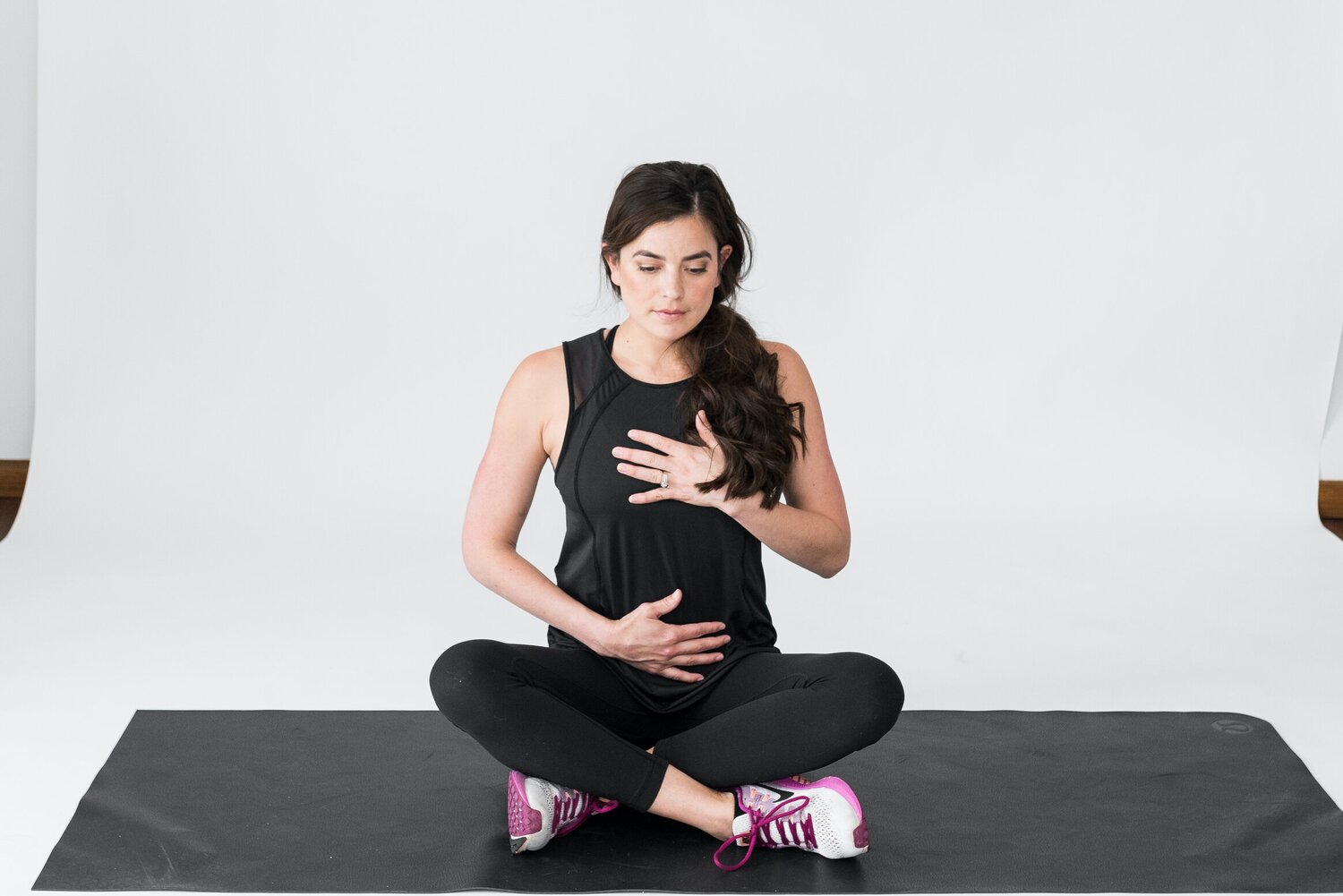
In pregnancy, you will spend approximately 10 months growing a baby inside of you and will then give birth, and preparing for postpartum physical recovery could be a main thought during the time of pregnancy. Pregnancy and childbirth will be a life changing experience on many different levels—physically, emotionally, and spiritually. Physical recovery time could take up to one year after delivery, so it’s important to be patient and compassionate with your recovery timeline.
Preparing for Postpartum Physical Recovery: The Top 5 Practices
- 1. Good Body Mechanics to Prepare for Postpartum Physical Recovery
Your body is already growing and changing with pregnancy. Your center of mass is changing which impacts your overall posture with walking, sitting, standing, and lifting. Learning how to lift/carry properly NOW by hinging at your hips, bending your knees, keeping your core strong, and maintaining a neutral spine will help both now and after delivery when you will be lifting and carrying a newborn A LOT! Proper body mechanics can help limit stress to pelvic organs, the low back, and pelvic floor.
- 2. Deep Core Activation
Your deep core system consists of 4 muscles groups – (1) pelvic floor muscles (2) diaphragm (3) multifidi (4) transverse abdominus. These muscles will be impacted as your pregnancy progresses. Learning how to properly activate these muscles with gentle exercises will be important and will help to improve your understanding and ability to activate them post-partum. See the video below about activation of the transverse abdominals and pelvic floor muscles.
- 3. Pelvic Floor Relaxation
Whether you have vaginal delivery or c-section, understanding how to lengthen your pelvic floor muscles will be important to the overall function of your pelvic floor and deep core system post-partum. Diaphragmatic breathing (“aka belly breathing) is a way to lengthen the pelvic floor. See the video below.
- 4. Mindfulness Practice
The challenges of being a new parent, the physical exertion on your body, and the changes in hormones can be a trigger to your sympathetic nervous system. In other words, having a baby is stressful so finding ways to manage your stress will be helpful for your long-term well-being. Cultivating a mindfulness, breathing, and/or meditation practice while pregnant can prepare you for when things feel even more challenging. Research shows that these types of practices can help decrease our sympathetic nervous system response, which then can help improve sleep, pain levels, digestion, and overall well-being. Check out apps like Calm, Waking Up, Buddify, Insight Timer, or Headspace with guided meditations to get you started.
- 5. Schedule with a Pelvic Floor Physical Therapist
Pelvic Floor Physical Therapy addresses many ailments involving the pelvic floor. We can help you both during pregnancy and post-partum in the following ways:
What Pelvic Floor PT Looks Like During Pregnancy
- Teach safe exercise
- Ensure optimal pelvic floor function
- Reduce pain—common areas of pain during pregnancy are the low back, pelvis, hip, SI joint, and thoracic area
- Educate about what to expect during labor and after delivery, positions for labor, lifting/carrying mechanics, breathing, and posture
- Manual therapy (external and internal) to improve blood flow to muscles and to prepare for childbirth
What Pelvic Floor PT Looks Like Post-Partum
- Teach safe exercise and prepare to return to previous levels of exercise
- Ensure optimal pelvic floor function and recovery
- Reduce pain—common areas of pain post-partum are the low back, pelvis, hip, SI joint, thoracic area
- Educate about posture, lifting/carrying mechanics, breathing, and posture
- Assess for diastasis recti (a common post-partum concern) and teach strategies to improve diastasis
- Assess for prolapse and teach strategies to minimize prolapse
- Improve urinary or bowel incontinence
- Manual therapy (external and internal) to address vaginal scarring and surrounding pelvic soft tissue restrictions/imbalances
Use these tips to prepare yourself for a healthy pregnancy and post-partum period. Rebalance Physical Therapy is the foremost clinic in the Philadelphia area specializing in orthopedic and pelvic floor conditions. If you are not local, we also offer telehealth visits. Contact us today to schedule a consultation!
Written by Andrea Barberio, PT, DPT
















